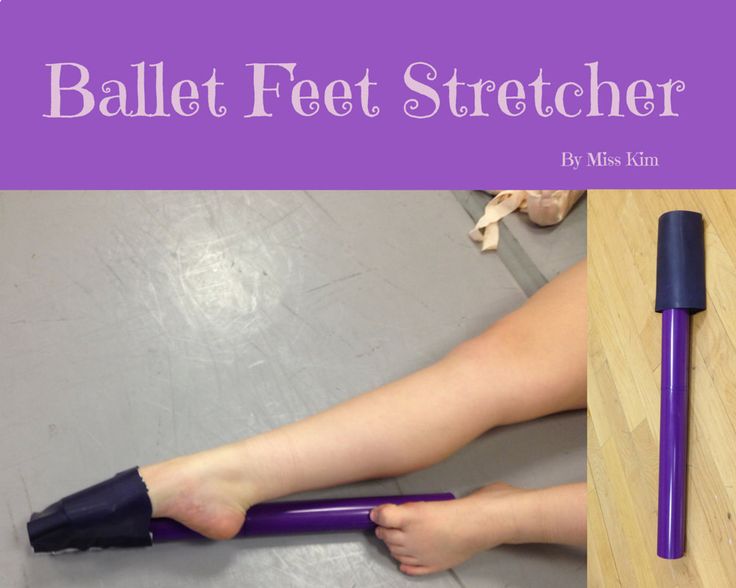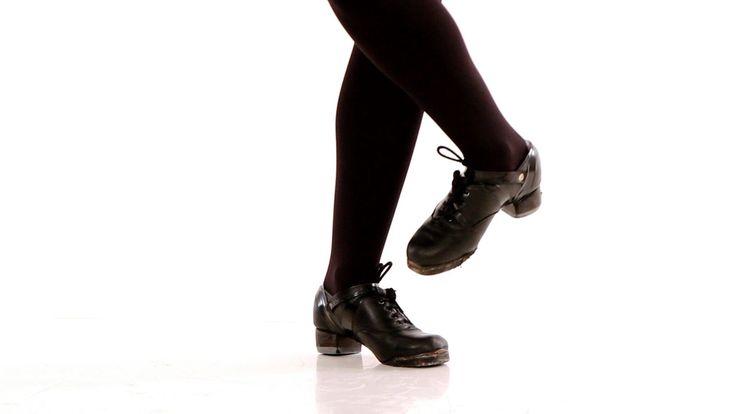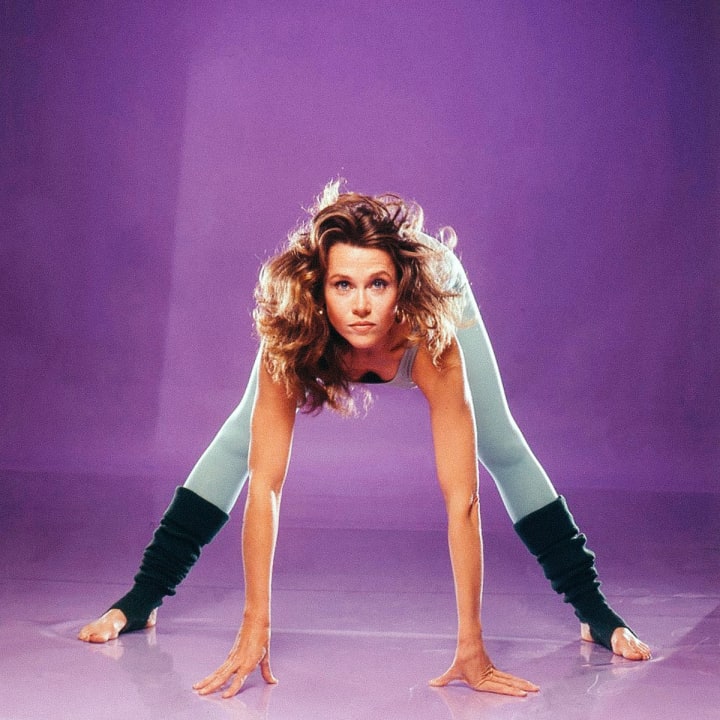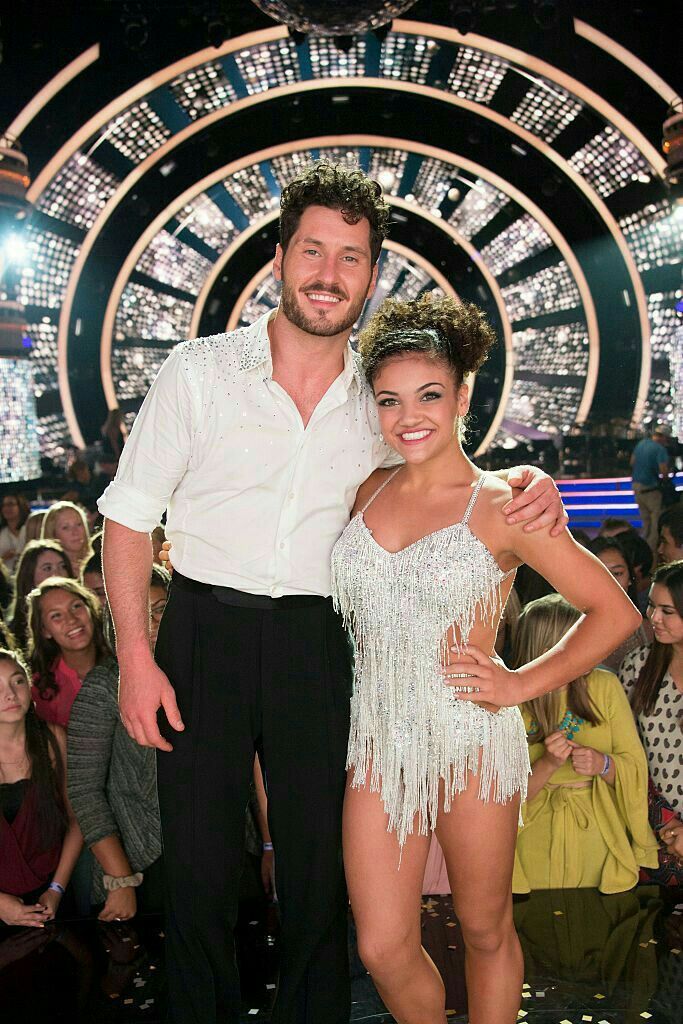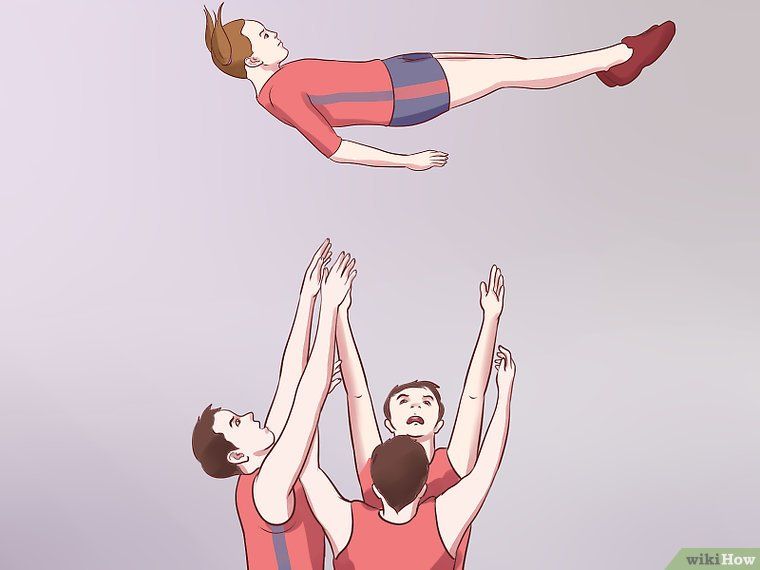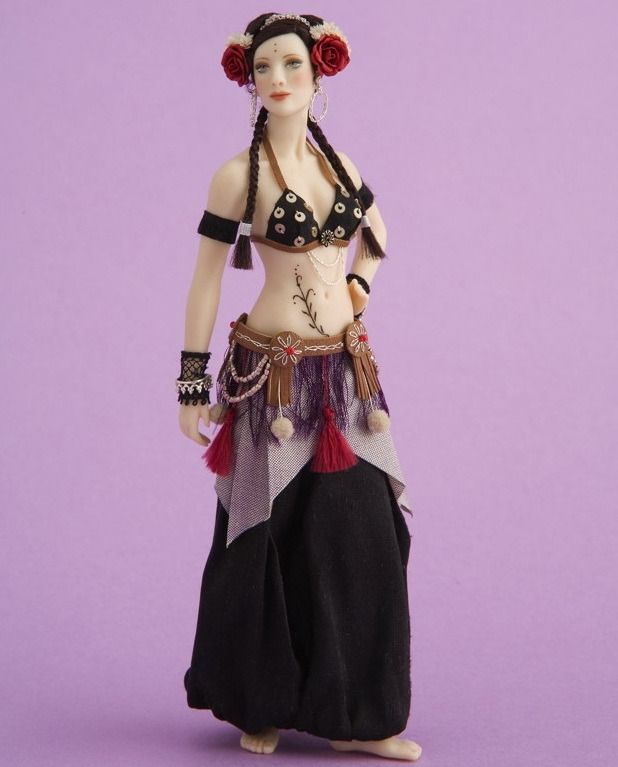How to make a foot stretcher for dancers
Foot Stretcher | Stretches to Improve Arch Flexibility
You’ve probably heard your dance teacher talk about foot stretchers! But what are they? Do they really work? Where can I get one? Why can’t I just stretch my feet myself? Woah-woah! So many questions! But fear not, the foot stretcher is about to be de-mystified.
A foot stretcher is simply a device used to stretch the arch of your foot. Sure, you could use just a TheraBand and stretch your feet with a myriad of exercises, and you should! But a foot stretcher just makes your life as a dancer much easier. You could chill out in front of the TV after class with your feet stretching all with the help of a handy dandy foot stretcher.
Here’s everything you need to know about foot stretchers:
So, what is a foot stretcher and why do I need one?A foot stretcher is a device that essentially molds to your foot, but applies pressure that helps dancers gain mobility by stretching the soft tissue in the foot. It’s used by dancers, but also by cheerleaders, gymnasts and all other kinds of athletes! Its main purpose is to give you more leverage in your arch and mid-foot area, if you’re using it correctly. Simply put, getting a foot stretcher will help strengthen your arch and give you a prettier point by expanding your point range!
The most important thing is to make sure you’re using the foot stretcher correctly, and that it’s not overstretching your foot, because too much pressure can end up weakening your feet or cause dancers to more frequently roll their feet in.
Best thing to do is bring your foot stretcher to ballet class and have your teacher demonstrate how far you should stretch your feet! Every dancer’s mobility is different, so your teacher will know best.
How to use a foot stretcher properlyIt’s a good idea to consult your ballet teacher when it comes to using a foot stretcher. You can also find really helpful guides, like this one on YouTube! Each foot stretcher looks a little different, but the important thing to focus on is not letting your foot roll in mid-stretch.
To keep the foot in place a TheraBand helps a lot! But be sure to show your dance teacher so you know for sure you’re doing it right.
How to stretch your arch in generalThere are other ways, in addition to a foot stretcher, that you can work your arch! According to wikiHow, these are some great techniques.
First, simply point your foot towards the outer part of your ankle, you can also wiggle your toes to wake them up, like this:
Then, you can increase your arch with a wall exercise by kneeling with one knee to the ground and your other leg leaning up against the wall vertically. Do this on a low surface, make sure your foot feels comfortable and you’re not in pain. If you feel a stretch, great! If you feel pain, stop! You should feel a stretch, but nothing that’s too uncomfortable.
Try doing it for a short period if it’s too much at first, work your way up to it with practice! It should look like this:
Next, try rolling your feet! You can get a foot roller, but you could also use a tennis ball or any object that feels comfortable enough to roll, like this:
Lastly, try using a TheraBand to stretch your foot by placing it on the ball of your foot and pulling it towards you to create resistance. Remember you want to keep your foot turned out and want to prevent any rolling in! Pigeon toed ballet dancers aren’t really pretty to watch, and rolling your feet in can lead to injury!
Remember you want to keep your foot turned out and want to prevent any rolling in! Pigeon toed ballet dancers aren’t really pretty to watch, and rolling your feet in can lead to injury!
It should look like this:
If you get bored of these exercises ask an expert, a.k.a. your Ballet teacher!
Best foot stretchers on the marketThere are loads of different options when it comes to foot stretchers. So many that it can be a bit overwhelming, especially when you really want to get one quickly.
While it’s hard to know for sure, “The Arch Genie” claims to be the O.G. foot stretcher and is the most popular option for ballet dancers across the globe.
But if you don’t want to follow the status quo you can always get a recommendation from other dancers at your studio and your ballet teacher! You can find foot stretchers of all kinds at multiple outlets like, Amazon, Footstretch.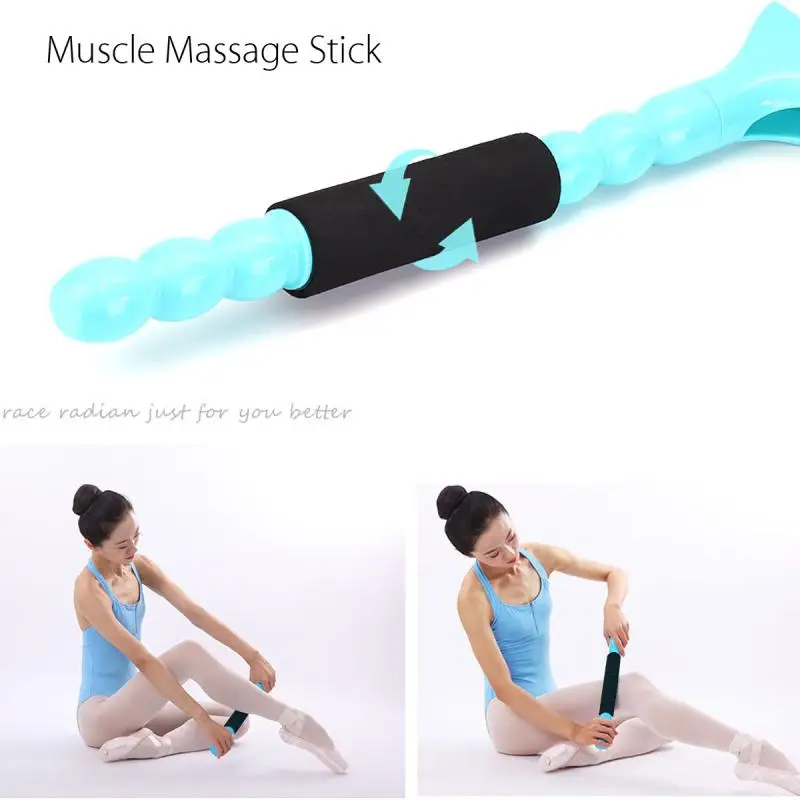 com, Dancesupply.com, and your local dance store.
com, Dancesupply.com, and your local dance store.
So, check out any of these places, and check out Ballet Box for your essential items you need regularly!
The Pros and Cons of Foot Stretchers – The Ballet Blog
The Pros and Cons of Foot Stretchers
& how to improve your pointe range safely without one!
Many dancers are in a rush to improve their pointe range; whether it be because they are hoping to go en pointe are auditioning for full time training or are moving into performing at a professional level. Most dancers and their teachers want to improve the line of their feet and wonder whether using a Foot Stretcher is a good way to improve pointe range.
However, Foot Stretchers can be dangerous to use in some dancers, and may encourage Posterior Impingement. I have created the following video on the pros and cons of Foot Stretchers so that you can be more informed to decide whether it is safe for you or not.
It is definitely not necessary to use a foot stretcher to achieve the line desired in classical dance to achieve a professional career.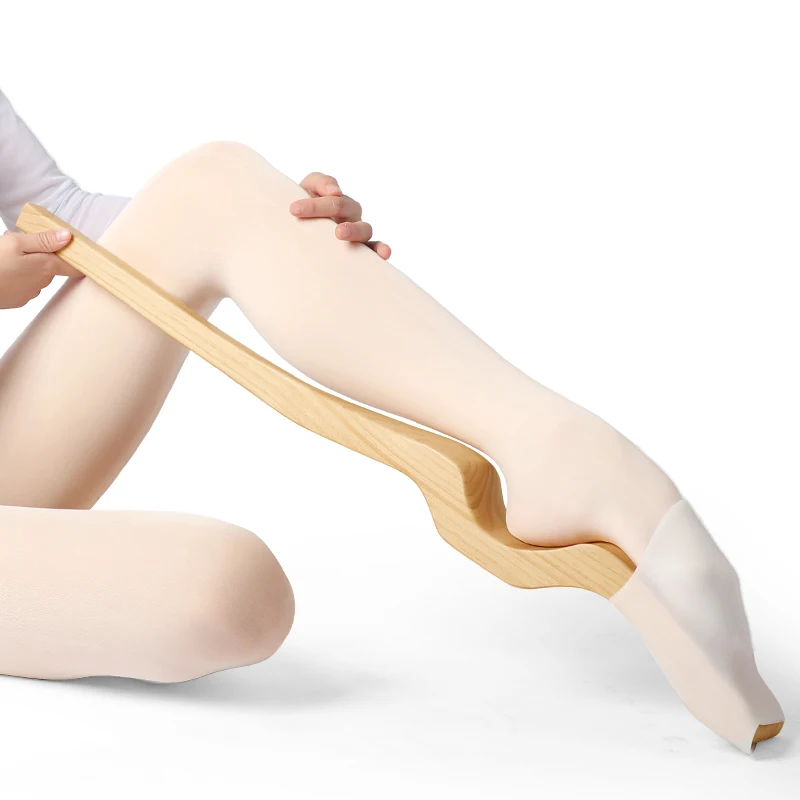 Any attempts to increase pointe range should be done very slowly, and with careful thought to the anatomy of the ankle to keep it stable and strong. I also encourage you to think carefully about why you want to improve your pointe range. If it is to just look good in some Instagram still photos, is this really worth potentially injuring your feet long term and not actually being able to dance?
Any attempts to increase pointe range should be done very slowly, and with careful thought to the anatomy of the ankle to keep it stable and strong. I also encourage you to think carefully about why you want to improve your pointe range. If it is to just look good in some Instagram still photos, is this really worth potentially injuring your feet long term and not actually being able to dance?
I am not aware of any specific studies that have looked at each of the different products on the market, but I definitely have my reservations, especially about a whole class using the same device, as outlined below. There are three main reasons why I recommend avoiding foot stretchers:
- The stretch is not specific to the point of restriction and may cause injury
- Overly stretched ligaments can make the ankle very unstable
- Most dancers have issues with strength and control, rather than range
- My resistance to using any one device, especially across a whole class full of students, is that every foot is different and may require mobilising in different ways, as we will discover in this program.
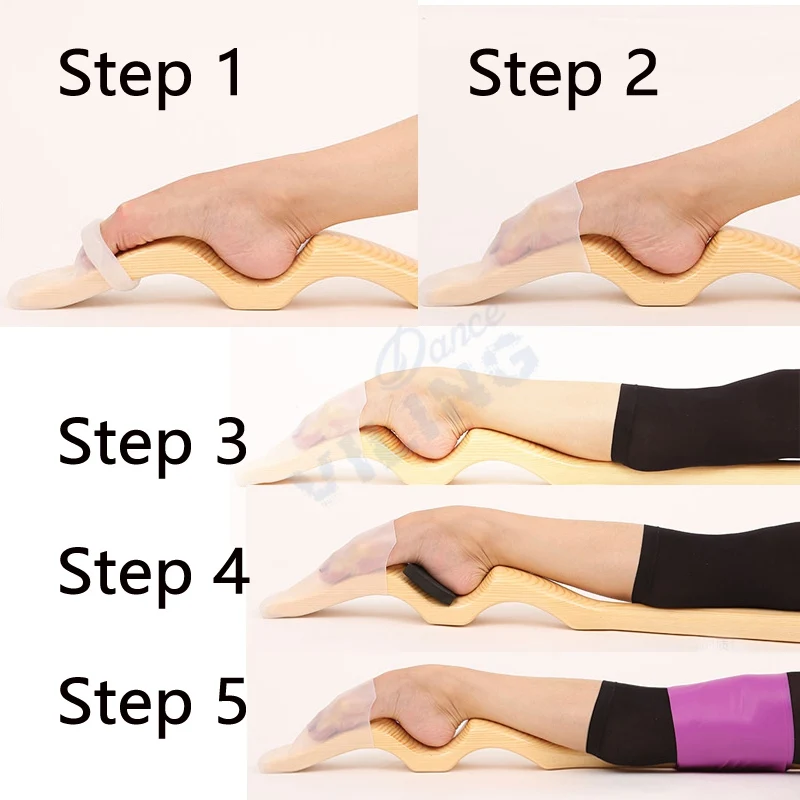 If you have stiff feet, the chances of one device being able to isolate where that particular foot needs more mobility is highly unlikely! Some feet need more range where the metatarsals meet the tarsal bones, others need it between the tarsal bones, some need it between the talus and the lower leg, and some need fascial releases much further up the line. Most of the bony restriction in ankle range that I see in the clinic is actually a block in the sub-talar joint, which cannot be stretched with any of these devices – most of them actually compress it!
If you have stiff feet, the chances of one device being able to isolate where that particular foot needs more mobility is highly unlikely! Some feet need more range where the metatarsals meet the tarsal bones, others need it between the tarsal bones, some need it between the talus and the lower leg, and some need fascial releases much further up the line. Most of the bony restriction in ankle range that I see in the clinic is actually a block in the sub-talar joint, which cannot be stretched with any of these devices – most of them actually compress it! - Most of the devices on the market focus on forcing the foot into a pointed position, and this can result in compression of the structures at the back of the ankle. Many students with restricted range have issues with pain in the back of the ankle anyway, due to constantly working against restriction, so forcefully over-pointing the foot can actually exacerbate compression in the back of the ankle, often leading to posterior impingement.
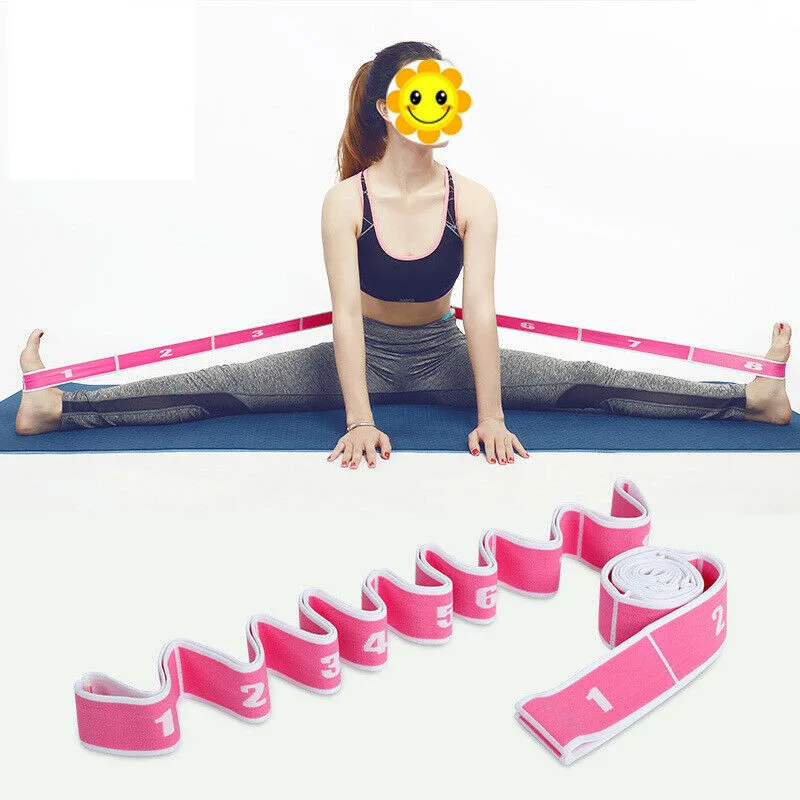
- If there is to be any benefit from using a foot stretcher, the stretch should be felt as a gentle stretch spread over a wide area on the front of the foot. It should never be felt as pain, cramping in the foot, pain or compression in the back of the ankle, or as a focused stretch at one point.
- Most foot stretchers are promoted by suggesting they help stretch your ligaments in order to allow a fully pointed foot.
- Over stretched ligaments have reduced proprioceptive feedback, meaning that it is harder for you to feel where the foot is, making the foot more unstable. We definitely do not want to do this, especially when when progressing with pointe work.
- Please also notice that in just about all of the images you see advertising foot stretchers, the dancer also has a slightly (or not so slightly) hyperextended knee. These girls most likely already had a lovely line, and didn't need much assistance from the device to make it look beautiful.
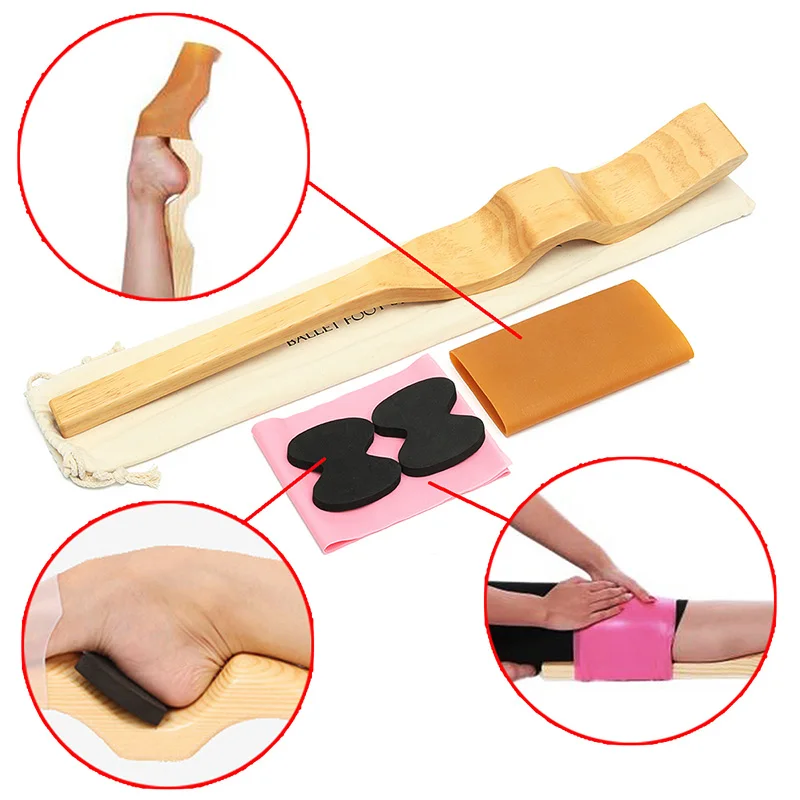 If you already have hyper-mobile feet – strong stretches across the front of the foot may overstretch the ligaments, making the foot even more unstable and vulnerable to injury.
If you already have hyper-mobile feet – strong stretches across the front of the foot may overstretch the ligaments, making the foot even more unstable and vulnerable to injury.
- Any attempts to increase the range of motion into either a pointed or flexed position must be accompanied by specific strengthening exercises so that you can actually use the new range of motion when you dance.
- Excessive range in the ankle without excellent proprioception and strength can be the cause of many foot and ankle injuries.
- It is also important that you build this strength as your range increases. Sudden increases in mobility, without the appropriate awareness and strength, can make you much more likely to injure or foot in class.
For more information on this kind of issue, please check out the following links to articles and other information:
- Clicking In The Back of the Ankle
- FHL Tendinopathy
- Os Trigonum
- Achilles Tendinopathy
- Trigger Toe
If you are wanting to learn some safe ways to mobilise and strengthen the foot is a safe way, then our How To Increase Your Pointe Range Safely Without A Foot Stretcher is perfect! It basically teaches you how to become your own foot physio, by going through;
- The anatomy of all the important muscles in the feet and ankles
- How each muscle is designed to work, and what happens when it goes wrong
- Safe ways to massage each muscle group to relieve tension and prevent injury
- Safe stretches to increase your flexibility and range of motion
- Specific strengthening exercises for each muscle so that you can master control of your feet!
The 3D Calf Stretch
One of the most popular techniques for safely improving both plié range and pointe range from the program is the 3D Calf Mobiliser.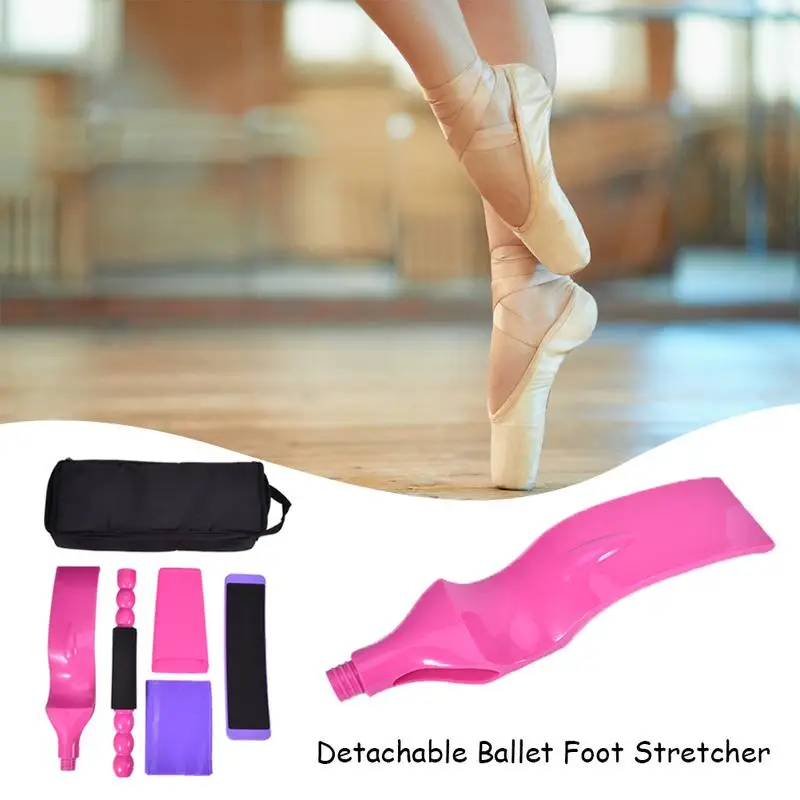 This technique mobilises all of the small joints in the mid and rear foot, mobilises the fascial tissue in the back of the calf, and can also improve your turnout control!
This technique mobilises all of the small joints in the mid and rear foot, mobilises the fascial tissue in the back of the calf, and can also improve your turnout control!
Follow the instructions carefully to get all of the details. Ideally do this after giving the foot and ankle a gentle massage for best results. Perform the technique on just one foot initially, then test your plié and rise to assess the effect.
Return to the Training at Home page
Pointe Resources
If you are looking to delve deeper into this topic, check out the following programs:
- The Perfect Pointe Book: This course was originally designed to help students and dance teachers safely prepare for pointe work. The four stages of tests and exercises within the book are ideal for pre-pointe preparation classes, students close to achieving pointe shoes and students already en pointe looking for extra strength and technique training.
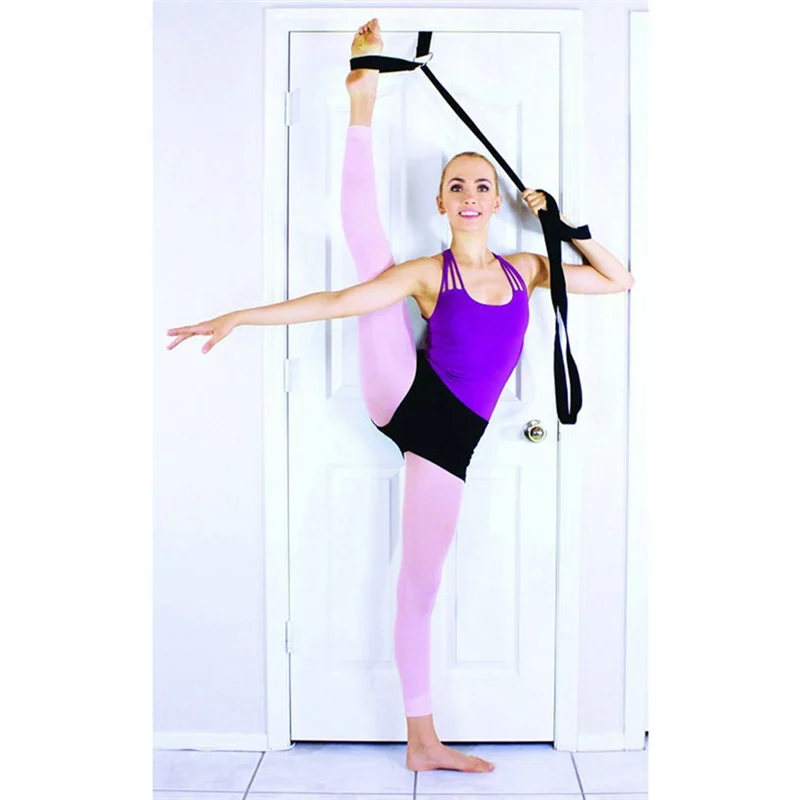
- Pointe Range: This online program comprises of 41 clear and concise videos, totalling just under 2 hours play time, this course begins with a series of assessments to establish exactly what structures are restricting your pointe range. It then explores a diverse array of massage techniques, joint mobility exercises and fascial mobilisers to safely improve your pointe range. This is followed by an in depth look at retraining all of the muscles that stabilise the foot and ankle to allow you to actually use your new found pointe range in class.
- Pointe Intensive: This online virtual workshop is designed for both Dance Teachers & Health Professionals working with dancers. This three day Intensive will give you the most up-to-date advice in the industry to help you understand your students’ needs, analyze their differences, and them you the tools to help your students become the best dancer they can be.
Stretching for dancers
- Legs and back preheat!
- slopes to the floor.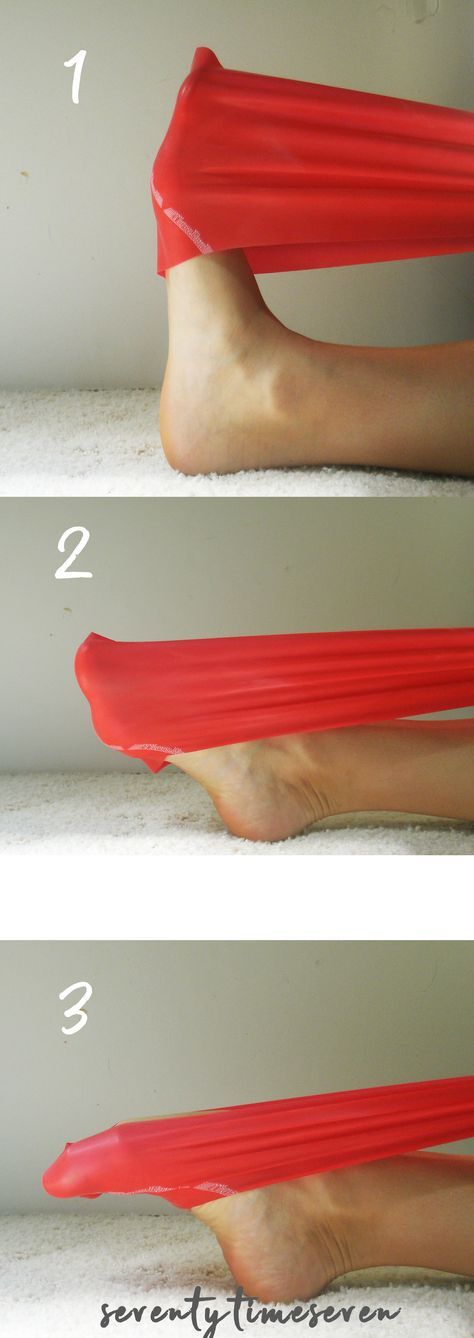 Stand up straight and spread your legs, slowly bend to one leg, the second and to the middle. Try to reach the floor and hold for a few seconds
Stand up straight and spread your legs, slowly bend to one leg, the second and to the middle. Try to reach the floor and hold for a few seconds
- Folds for longitudinal and transverse splits (with open legs)
- Deep forward lunges and their varieties (Runner). Hind leg straight straight line from hip. Front leg angle 90 degrees.
- Deep lunge with catching and raising the shin of the back leg. The back is straight, the body is even.
- Lunge and knee stance of the back leg and straight front leg. Smooth exit.
- Butterfly. Knee swings. Leaning forward.
- Single leg split.
- Sitting legs apart. Tilts to each leg.
- Horizontal stretch and on the floor. Rubber bands may be used. Variation on the back and on the side. Gently pull your leg up, gradually straightening. If you can, straighten your leg and pull it as high as you can.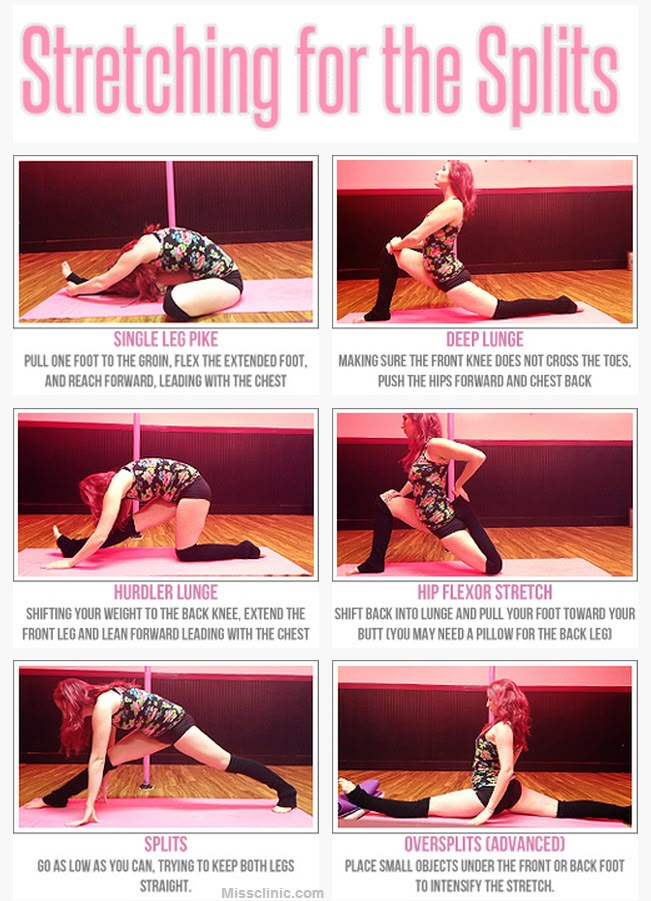 Change sides, repeat the exercise. You can use rubber bands.
Change sides, repeat the exercise. You can use rubber bands.
- Power stretching in a standing position with a leg grip.
- Vertical twine. Wall workout.
- Classical stretching of the longitudinal and transverse twine.
Link on stretching 1
Providing exercises for longitudinal twine:
- We pull the legs to the legs in the standing position , stretch the popliteal tendons
- in the position of standing with our hands, we take the pelvis with the knee with the knee forward .
- Pull the rear leg in a lunge towards you
- Lunge forward (90 degree angle) + 2 elbows on the floor or hands
- fold with legs forward 40 sec.
- we catch the leg - one handle under the foot, the back is even. Next, without hands, hold with muscles
- wrap one leg in half twine and fold for 40 seconds.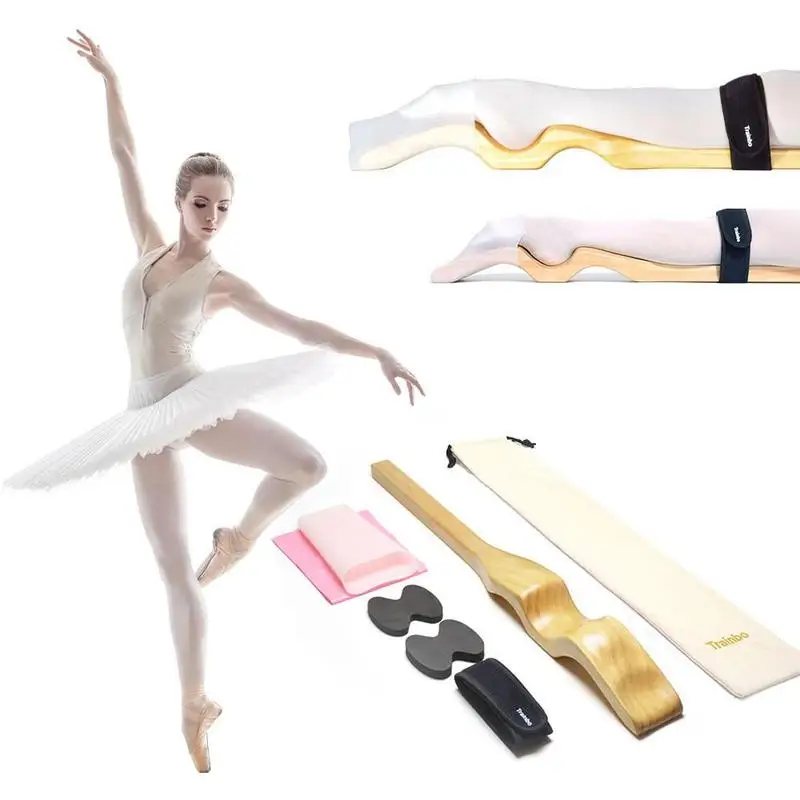
- prone swings on 8 we catch
- standing tilt in the warehouse and do intensive back swings. At 8 we were detained and kept in a candle.
- lunge, the back is even, the knee does not go over the heel. Lunge and bend back leg.
- standing swings 3 sets of 8 reps
- get on 2 knees , back straight, bring one leg forward, tilt towards it, stretch the hamstring, then slowly move apart, shoulders are even, the heel of the back leg is looking at the ceiling! Two shoulders and two hips look straight at the front leg. Next, bend the back leg.
Lead up exercises for the splits:
- bow tie, bow tie
- 6th position pleat + shortened feet. Fold with a straight back to straightened legs. Crease with the foot in the pass and a twist in the body.
- legs to the sides, stepping forward with hands and fold forward, bending to the legs, then bending sideways
- wrap one leg behind us and lie down forward
- frog (legs form an even rhombus).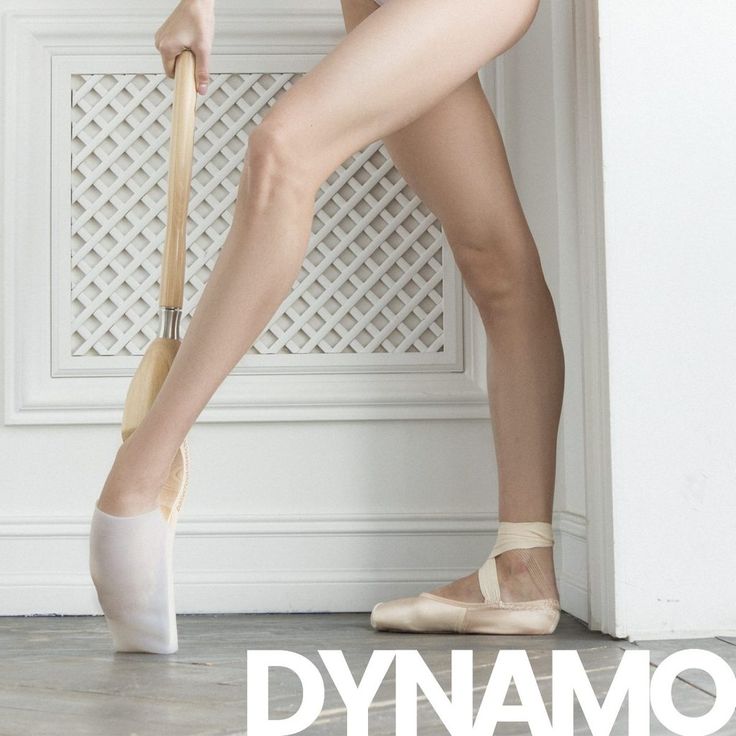 Sit on your knees and spread your legs apart as far as you can. Resting your hands on the floor and keeping your back straight, bend over and stretch your arms forward. Lower your head and stay in this position for a few seconds. Rolls forward and backward.
Sit on your knees and spread your legs apart as far as you can. Resting your hands on the floor and keeping your back straight, bend over and stretch your arms forward. Lower your head and stay in this position for a few seconds. Rolls forward and backward.
- Side lunges. Lunges and going up without fixation and with fixation to the side with a deep stretch
- Stretching the legs to the sides while lying on your back.
- swing forward to the side (cross exercise)
- hands on the floor, slowly open your arms to the sides, sit on the twine. DO NOT turn the toes forward and knees, the back is straight, the legs form one straight line.
Tilt (water split):
- lying leg up to the side, change legs (8-10 times 3 sets)
- lying legs up, open legs to the sides for 8 counts
- lying legs in a butterfly, open in a transverse sword
- lying watch - one leg up - to the side - down, the second down, to the side, up (tighten the fingers!)
- standing the leg inverted, throw the leg into the transverse twine, grab it with your hand (The leg looks clearly at the ceiling! If it falls forward, this is a fold).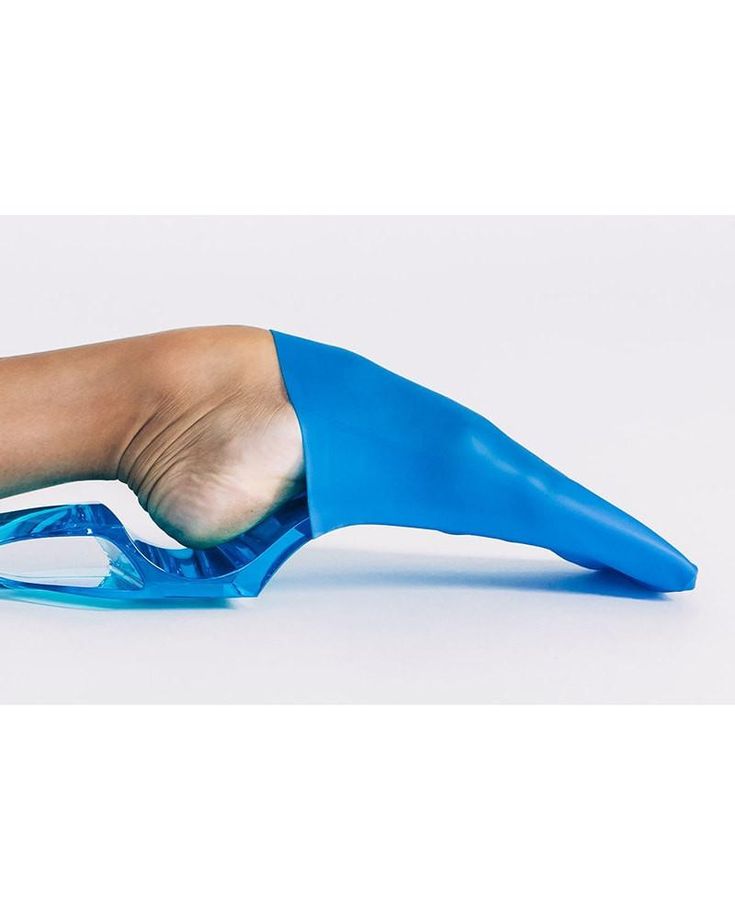 Next, we try to remove the hand from the leg. Further, the output through the devlope of the leg without the help of the hand
Next, we try to remove the hand from the leg. Further, the output through the devlope of the leg without the help of the hand
- A difficult version of the arm to the sides, the body is tilted, we bring the leg up into a split in the air
- On the splits we stretch to the legs with the opposite hand
- On the floor, lying down, pull the leg in the knee towards us
- leg swing to the side in support of the hands in the stalls
- on the floor, leg swing and catch the leg with the lying arm
Stretching on the twine. Fitness for dancers
Twine is one of the fundamental elements in sports dances, gymnastics and ballet. The ability to sit on the twine clearly indicates a good physical shape: high elasticity of the muscles and mobility of the joints. All types of twine, even relatively simple ones, look impressive.
This fact justifies the interest in them among the townsfolk who are little familiar with sports. However, this complex exercise should not be an end in itself.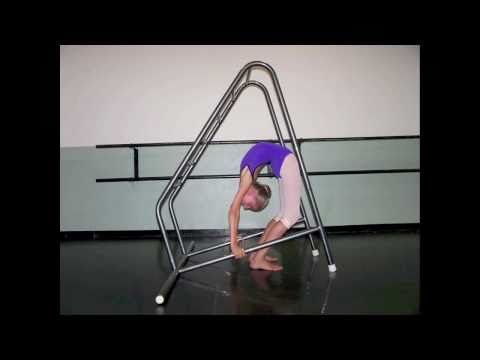 The ability to sit on a twine is a consequence of an excellent stretch, which can be achieved with the help of quite affordable, but always regular exercises.
The ability to sit on a twine is a consequence of an excellent stretch, which can be achieved with the help of quite affordable, but always regular exercises.
Why sit on the splits?
The need for this exercise in sports, dance and ballet schools is obvious to everyone. But this skill will also help anyone, as a good stretch guarantees grace and smoothness of movement and helps prevent injuries (both sports and quite ordinary). Stretching activates the metabolism. This means that fat burning will occur faster. In addition, stretching (in particular, all types of twine) improves the blood supply to the organs of the genitourinary system and prevents some of their diseases. People who can sit on the twine rarely suffer from varicose veins. And women with mobile hip joints and trained ligaments have an advantage during childbirth.
Contraindications
Twine is an exercise that requires good sports preparation. There are few contraindications to its implementation, but they still exist.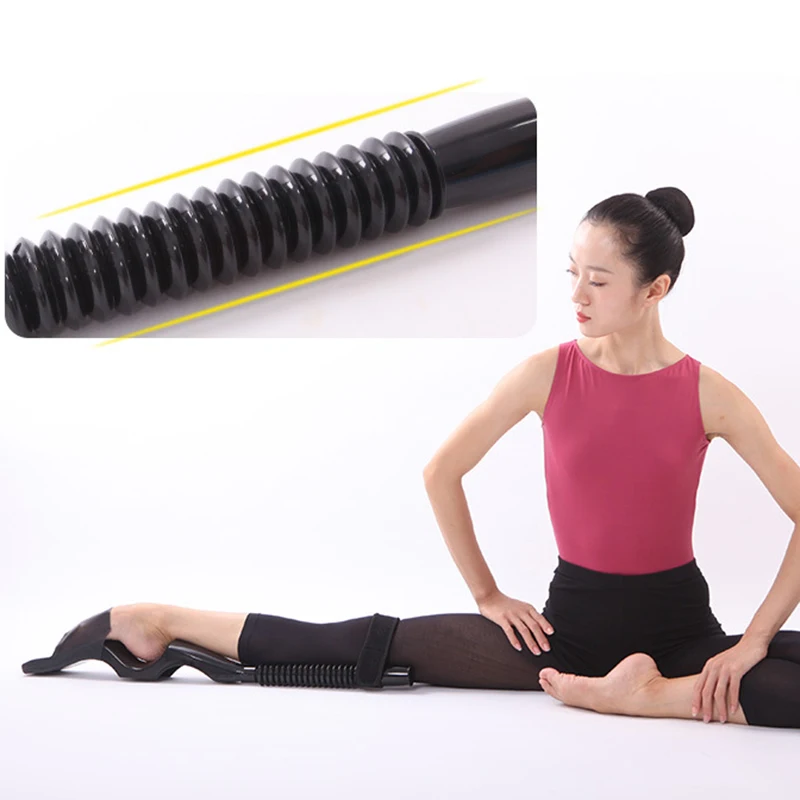
These include: severe lesions of the musculoskeletal system, bruises, pain in the sacrum and lower back, inflammation of the hip joints, the presence of cracks in the bones and high blood pressure. But even people who do not suffer from these ailments, while stretching, should be careful: you cannot perform the exercise without warming up the muscles and ligaments with a warm-up.
Types of splits
The most common variations of this exercise are the longitudinal and transverse splits.
- With the longitudinal legs extended in one line: one - forward, the other - back.
- With the transverse legs spread apart, the pelvis is on the floor surface.
These twines are considered "plain". Other types are available only to professionals. Among them, we can mention the vertical, which is performed while standing and can be both longitudinal and transverse, and twine on the hands (it can also be both transverse and longitudinal).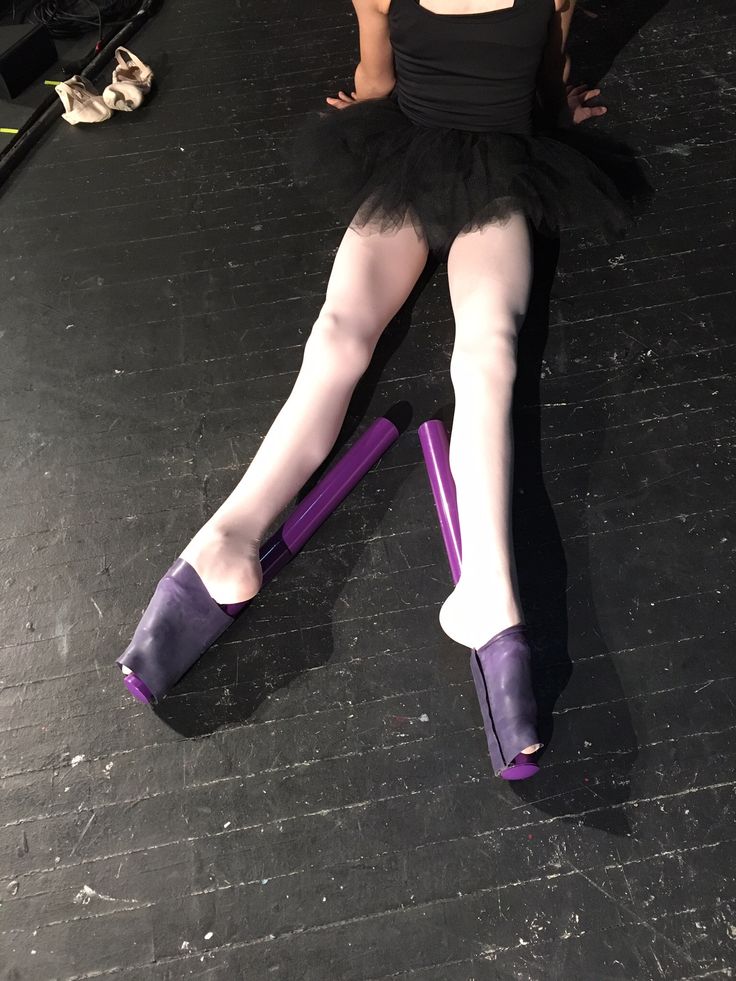
How long does it take to do the splits?
Numerous articles posted on the net do not give a clear answer to this question. This is not surprising: the speed of mastering twine is determined by natural abilities, health status, physical fitness, age, anatomical features and many other purely individual factors. It is known that twine is given to young athletes easier and faster. But the point here is not only in the mobility of the joints and the elasticity of young muscles, but also in the fact that in the gymnastic sections with pupils they usually do not stand on ceremony. Adults who exercise on their own treat their bodies more humanely. As a result, progress is slower. Nevertheless, even in adulthood, a person can master the longitudinal or transverse twine.
Another thing is that for some it will take several weeks, while for others it will take several years.
Precautions
Whatever type of splits you are learning, the key exercise should be preceded by a warm-up. It can be any kind of physical activity: jogging (including on the spot), cycling or a simulator, strength training or a set of cardio exercises.
It can be any kind of physical activity: jogging (including on the spot), cycling or a simulator, strength training or a set of cardio exercises.
The meaning of the warm-up is to warm up the muscle fibers. This measure prevents micro-tears in the muscles and prepares the joints for stress. In addition, heated muscles relax faster and easier, and this is important, since only a relaxed muscle can be stretched (and even then not immediately). If time is short, a few simple stretching exercises can be used as a warm-up. You also need to remember that stretching does not tolerate haste. Do not even ask how much your friends sit on the twine, otherwise you will always compare yourself with someone.
Listen only to your body! All movements must be performed carefully and slowly; in the same position you need to be at least 30 (or better - 60) seconds. Most likely, you will experience pain, but they should be moderate. Sharp pain signals an injury that has occurred. It is incompatible with training.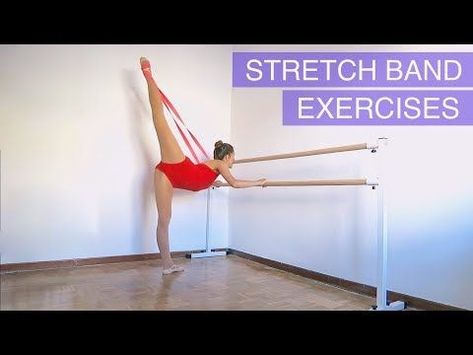
Twine stretch for beginners (universal muscle stretching exercises)
It is also important to note that the workout should be long enough - at least an hour. But the most important thing is regularity. Success can only be achieved through daily practice. You should start with simple exercises performed in several approaches: swings with a straight leg, squats with legs apart, forward bends with straight legs. The more muscles involved in a workout, the better.
Also recommended are exercises that are performed while lying on your back: leg raise at a right angle, bending the leg at the knee and pulling up to the chest.
Classical exercises are very useful: "paperclip" and "butterfly". In the first case, it is necessary, on your knees, to spread your heels and lean back (ideally, lie on the floor). In the second case, you need to sit on the floor, bring your feet together and spread your knees, and then try to press your knees to the floor.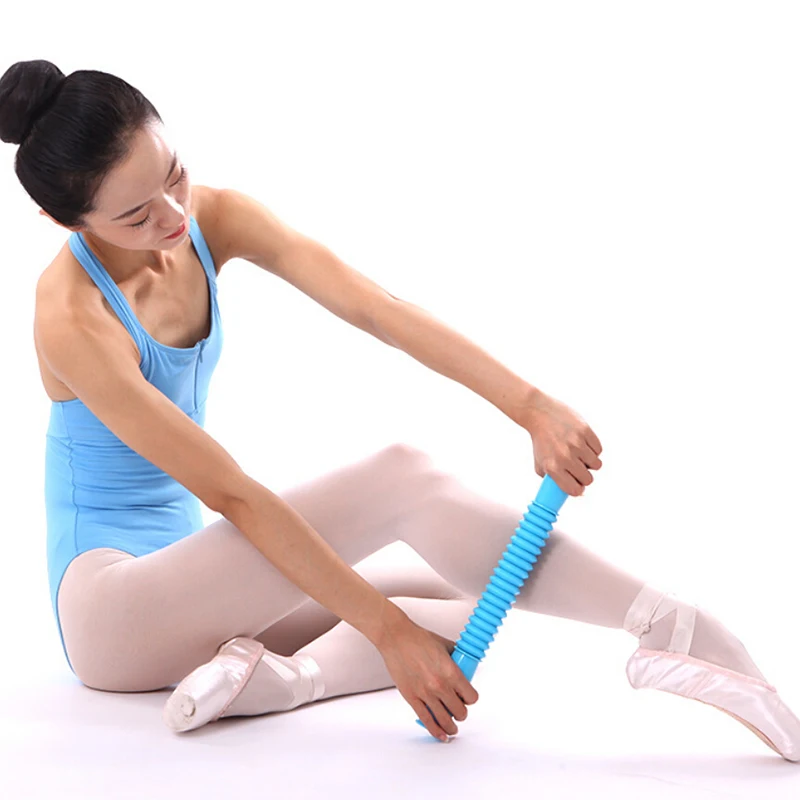 Twine stretching for beginners should consist of relatively simple exercises that do not cause discomfort. The easier they are given to you, the closer you are to the final goal.
Twine stretching for beginners should consist of relatively simple exercises that do not cause discomfort. The easier they are given to you, the closer you are to the final goal.
Longitudinal twine
It is believed that learning to perform longitudinal twine is more difficult than transverse, but it is less traumatic. First you need to take the "runner's pose". To do this, one leg is pushed forward (the thigh and lower leg should be at a right angle, and the knee should be directly above the ankle), and the other is set back as far as possible. In this case, you need to stretch the heel of your left foot back, leaning on the toe, as shown in the second photo.
Twine is unlikely to submit to you immediately, so you can put blocks or stacks of books on both sides of the mat and lean on them with your hands. Gradually move the foot of the front foot forward and lower the pelvis down (you can put a few pillows under it. As the stretch improves, you will refuse them).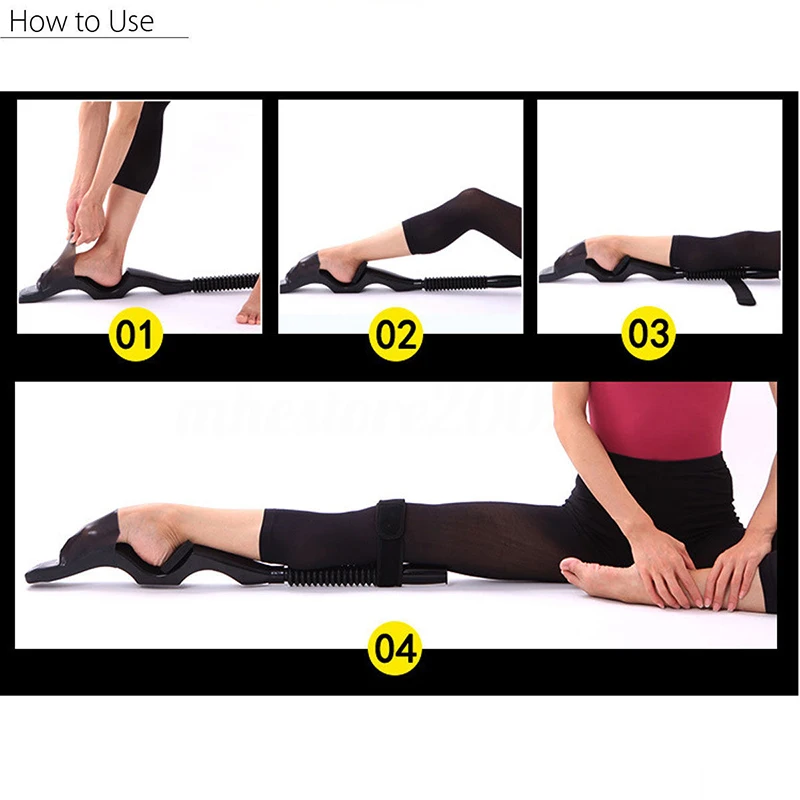 It is important to ensure that the torso is located exactly above the pelvis and does not move forward. You can't hurry. When you reach your limit, try rocking back and forth. Hold this position for a few tens of seconds, then repeat all over again. It will not be superfluous to watch some video twine lessons before starting classes.
It is important to ensure that the torso is located exactly above the pelvis and does not move forward. You can't hurry. When you reach your limit, try rocking back and forth. Hold this position for a few tens of seconds, then repeat all over again. It will not be superfluous to watch some video twine lessons before starting classes.
Longitudinal twine is a complex gymnastic element that is actively used in yoga, dance, ballet and even Pilates. The exercise maximizes the involvement of the hip joints and leg muscles, especially the inner and back of the thighs. How to sit on a longitudinal twine without pain and injury? To do this, you need to gradually stretch the muscles and develop the mobility of the joints, this is the only way to achieve the desired result with little blood. Of course, you will experience some discomfort, but it is better than walking with torn ligaments and dislocations.
How to sit on the longitudinal splits quickly and painlessly?
Follow the golden rules of effective stretching, then training will give you only pleasure and you will be able to count on quick results:
- Any workout should start with a warm-up.
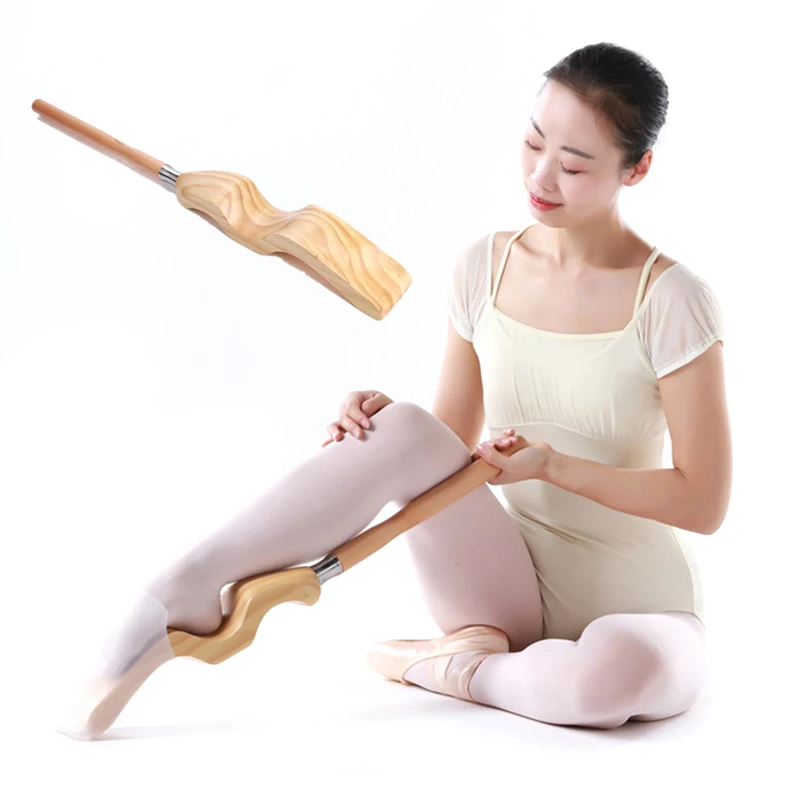 Any cardio load can serve as a warm-up for longitudinal twine, but it is better to give preference to a bicycle or a rope.
Any cardio load can serve as a warm-up for longitudinal twine, but it is better to give preference to a bicycle or a rope. - If you want to achieve results faster, then train twice a day. Morning stretching is very heavy, but the most effective. In the evening, the muscles are more flexible and supple.
- Try to give preference to static stretching methods, dynamic loading and pulsating movements can lead to sprains and tears.
- Each pose must be held for at least 30 seconds, and only then increase the amplitude or change the exercise.
- Always focus not only on technique, but also on your own feelings. There should be no pain, just a slight tension and a slight burning sensation in the muscles.
- Always watch your back, don't round it. If you are doing bends, then reach for your legs with your stomach, and not with your head.
- As in all sports, the main thing in stretching is regularity! Do not start training and try not to rest for more than two days in a row.
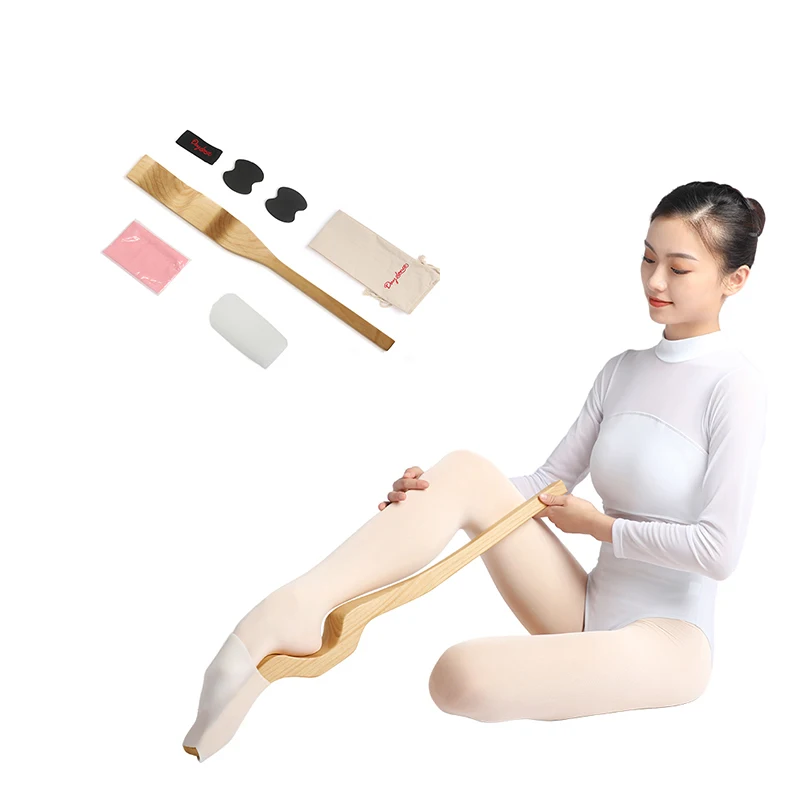
And now let's look at a set of stretching exercises that will bring you closer to the longitudinal twine.
Ballistic lunges
If you are new to stretching, it is best to start with a simple and familiar exercise - classic lunges. In order to sit on the longitudinal twine, this type of training needs to be slightly changed. The load on the muscles should not be dynamic, but static. To do this, you need to fix at the bottom point of the exercise and stay in this position for at least 30-45 seconds. Then you can immediately change the leg. If you perform lunges with dumbbells, then the stretching of the muscles will be stronger and much more effective. You can also significantly increase the amplitude if you perform the exercise on a hill, for example, use a bench or platform. Perform 25-30 repetitions on each leg and move on to the next exercise.
Butterfly Exercise
An excellent exercise for joint flexibility and tendon development.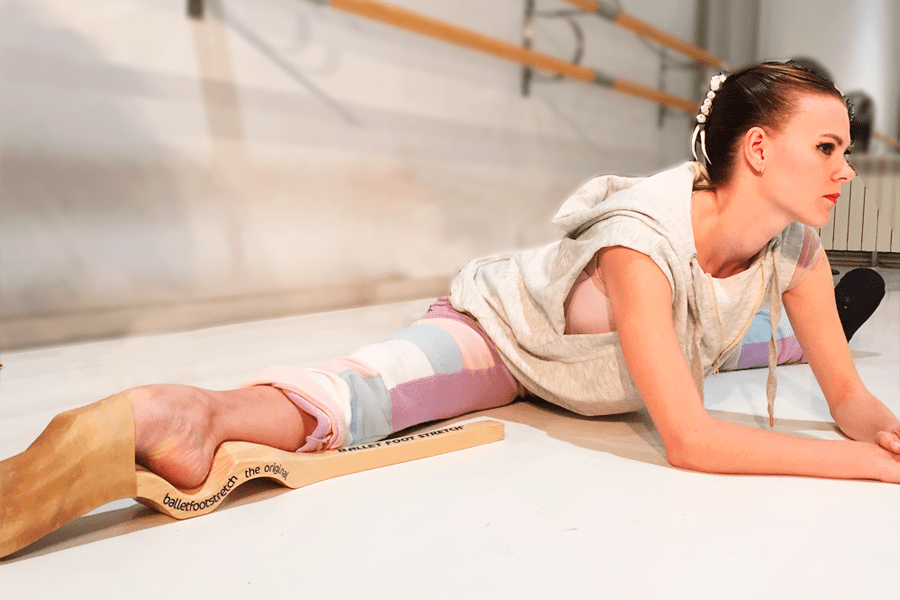 A similar pose is found in the course of yoga and Pilates. This type of stretching will help you master the longitudinal twine much faster.
A similar pose is found in the course of yoga and Pilates. This type of stretching will help you master the longitudinal twine much faster.
Technique:
- Sit on the mat with your back straight and your feet together.
- Try to lower your knees to the floor. If you succeeded, then do not waste time and move on to the following types of stretching, but not everyone can boast of such innate joint mobility.
- Slowly press down on your legs with your hands, slowly lowering them down. The main thing here is not to make sudden movements and not to overdo it with the applied effort. Take your time, watch your breathing: at the point of maximum muscle stretch, exhale, and in moments of relaxation, inhale.
Sitting Bends
Mastering the longitudinal split for beginner athletes is a rather painstaking and difficult task, because the muscles adapt to such types of load for a very long time and reluctantly, especially if you have not had good flexibility since childhood. When doing stretching exercises, always move from simple types of training to more complex and multi-joint ones. Do not forget that you need to stretch all the muscles of the legs separately. For example, tilts from a sitting position work on the inner thighs and adductors.
When doing stretching exercises, always move from simple types of training to more complex and multi-joint ones. Do not forget that you need to stretch all the muscles of the legs separately. For example, tilts from a sitting position work on the inner thighs and adductors.
There are several variations of this exercise:
- One-leg bends. This is an option for beginners. One leg is extended forward, the other is bent at the knee and the foot reaches for the groin. When doing bends, try to stretch your chest to your knee, while keeping your back straight and try not to hunch over.
- Leg extensions. This is a more advanced version of the stretch, it involves the simultaneous study of the posterior and internal bundle of the femoral muscle. Try to spread your legs as wide as possible, you can even do the exercise against a wall or with a partner. Then repeat the tilt technique from the previous type of exercise.
Loom stretching
Longitudinal split stretching can be performed on the loom.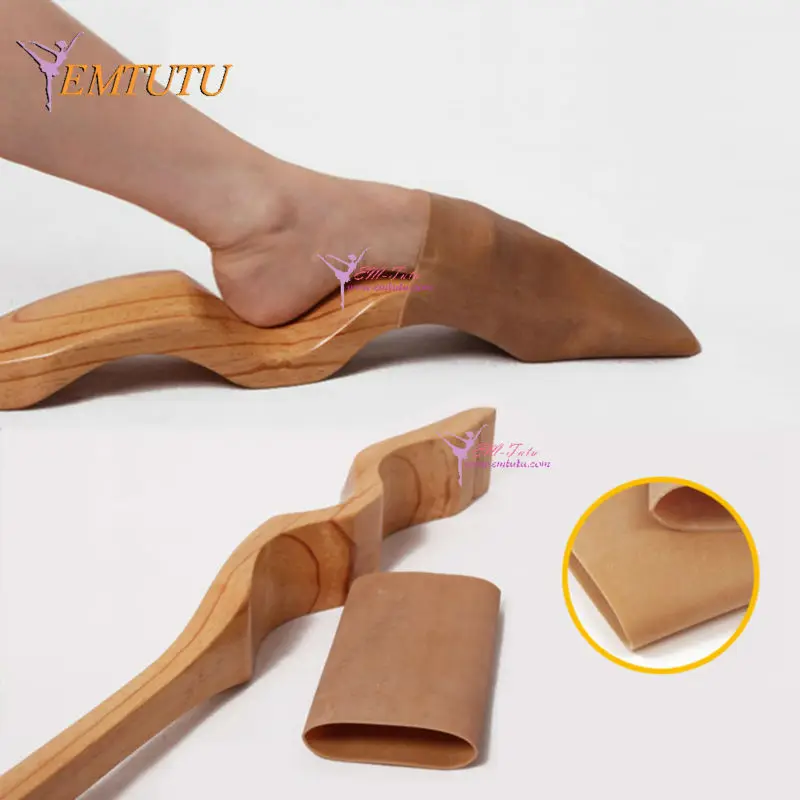 However, any crossbar, fence, high table and even a window sill can easily replace it. The main thing is to have a desire to train!
However, any crossbar, fence, high table and even a window sill can easily replace it. The main thing is to have a desire to train!
There are several options for stretching with the machine:
- Inclinations to the "working" leg. Put your foot on the machine or support, try to keep it as straight as possible and be sure to pull the toe. Make a deep bend directly to the leg, you can even wrap your arms around it. At the same time, it is unacceptable to round the back or bend the leg at the knee joint; all phases of the exercise are performed at maximum tension. If you position your "working" leg straight in front of you, then the quadriceps will stretch, and if you slightly to the side, then the inner thighs will take part in the stretch.
- Ballet squats. This exercise requires little experience in stretching and some skill, but it maximizes the load on the adductors. To perform the exercise, fix one leg on the machine and begin to squat slowly. Be sure you will feel how your muscles work and tense.
 Get as low as you can and pause. After 30-40 seconds, you can climb back.
Get as low as you can and pause. After 30-40 seconds, you can climb back.
A Bit of Yoga: Runner's Pose
There are two types of training that are always accompanied by stretching. This is yoga and gymnastics. Longitudinal twine can be very useful when performing complex choreographic exercises and all kinds of asanas. However, some yoga poses can be easily used as stretching training, such as the runner's pose.
Biomechanically, this asana is a bit like a lunge, the difference is only in the position of the supporting leg. She should be straight, not kneeling. Also, do not forget that this is a static exercise, which means that we simply stand in a pose, while stretching the muscles to the limit, and try to maintain balance as long as possible. It is very important to monitor your breathing here, it should be even and very calm, also try not to twitch or make other sudden movements.
Downward facing dog
We continue to do stretching on the longitudinal twine using yoga exercises.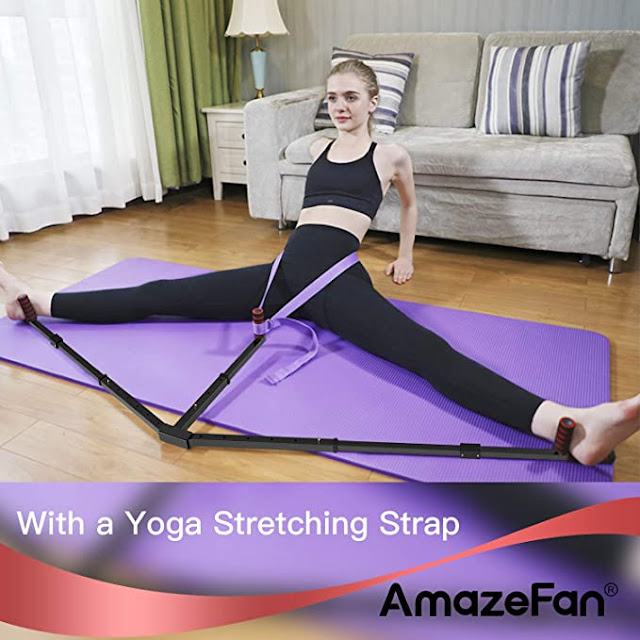 This is an excellent workout for the back of the thigh and buttocks. Your task is to form an absolutely right angle from the body and legs.
This is an excellent workout for the back of the thigh and buttocks. Your task is to form an absolutely right angle from the body and legs.
It is desirable that the feet remain firmly pressed to the floor, try not to tear off the heels throughout the exercise. This type of stretch can be made slightly dynamic. After you have taken the starting position, start pulling your knees to your chest in turn, this will increase the load on your buttocks.
Hip stretching exercises
If you want to master the right longitudinal split first, you should stretch your right leg more actively. So you will achieve results faster, but your body will be developed disproportionately. It is better to train both parts of the body in equal volume, then you can easily do the splits on each side. To make the muscles softer and more flexible, you need to knead and stretch them yourself. Some exercises can cause overstrain in the legs, which means that it is imperative to perform a warm-up and self-massage at the end of the session. Lie on the floor and try to relax your legs. Lift one of them up and use your hands to pull it to your chest, while intensively massaging the muscle sections. You should not only stretch, but also relax your muscles as much as possible. After all, if they are excessively reduced, all the exercises in the next lesson will be given with great difficulty and pain.
Lie on the floor and try to relax your legs. Lift one of them up and use your hands to pull it to your chest, while intensively massaging the muscle sections. You should not only stretch, but also relax your muscles as much as possible. After all, if they are excessively reduced, all the exercises in the next lesson will be given with great difficulty and pain.
Muscle readiness test
A set of longitudinal split exercises will help you achieve the desired result in the shortest possible time, but you need to constantly monitor the dynamics of success. To do this, you can use a regular ruler or a stack of several thin books. The second option is much more convenient. Place the stack under you and try to sit on the splits, hold in this position for as long as you can. If after a while you feel that you can reduce the distance to the floor, then remove one or more books. Fix again in the starting position. If you feel that you can no longer sit lower, then your muscles and joints are not yet ready.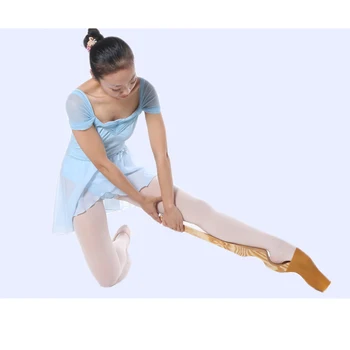 You need to return to training and repeat the test in 2-3 weeks. You will succeed, the main thing is not to rush.
You need to return to training and repeat the test in 2-3 weeks. You will succeed, the main thing is not to rush.
Longitudinal split technique
The most common mistake in longitudinal twine is incorrect technique. If you try to sit in a pose without observing all the rules and subtleties, you can seriously harm yourself. To avoid injury, it is necessary to perform the splits on a slippery floor in closed clothes and socks, so nothing will interfere with the exercise. Take an emphasis while sitting and spread your legs, begin to gradually lower yourself down, reducing the distance between the buttocks and the floor. Don't make sudden movements. If the strength of your hands is not enough to support the weight of the whole body, then do the splits using special stands or on low bars. Before the lowest point, linger a little, this will allow the muscles to get used to the unnatural position a little.
Cross Split
First, spread your legs and do a few forward bends.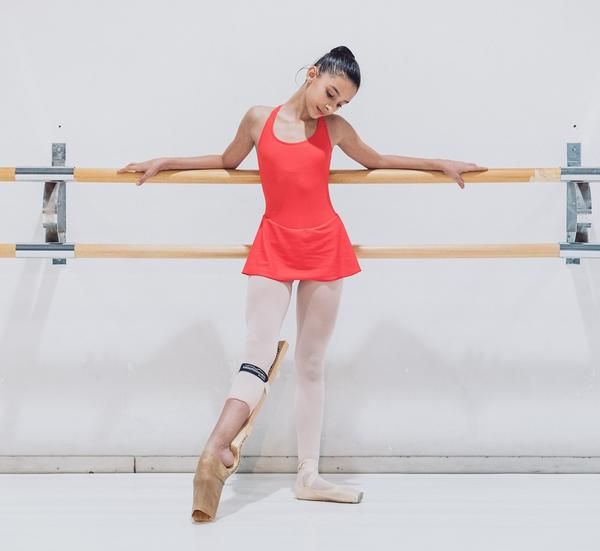 Try each time to linger in the lower position for a few seconds. Rest your palms on the floor (mat, stack of books, etc.) and begin to slowly and evenly spread your feet to the sides. Bend your elbows and try to lower your chest to the floor. To avoid overstressing the knee ligaments, you need to rest on the floor with your heels, and pull your socks up. Ideally, you should lower your legs, pelvis and stomach to the floor, and then sit up and straighten up. It will likely take you at least a month to master the cross split.
Try each time to linger in the lower position for a few seconds. Rest your palms on the floor (mat, stack of books, etc.) and begin to slowly and evenly spread your feet to the sides. Bend your elbows and try to lower your chest to the floor. To avoid overstressing the knee ligaments, you need to rest on the floor with your heels, and pull your socks up. Ideally, you should lower your legs, pelvis and stomach to the floor, and then sit up and straighten up. It will likely take you at least a month to master the cross split.
How to sit on the transverse twine correctly?
This type of twine is considered more difficult to perform, many do not have enough willpower to achieve such a result. The main thing here is to set a goal and have the desire to achieve it.
Basic rules on the way to the transverse split
It should be clear to everyone that it will not be possible to quickly sit on the transverse split, so you need to follow a few rules that help you achieve the expected result much faster.
- 1. Muscle stretching. In no case should you do physical exercises without stretching, especially twine. These exercises will warm up the whole body. To do this, it is worth making a few light movements: running in place, tilting the body and swinging the legs to the sides. To get a double benefit, it is recommended to warm up after cardio training.
- 2. Daily workout. To the question of how to sit on the transverse twine, one answer is regular exercises that can lead to success. It is advisable to do stretching at any free time throughout the day. First, it is worth training every other day, and when the body gets used to the loads - every day.
- 3. Clothing. The final result depends on how a person dresses during training. You need to do it only in a warm room, after putting on a loose T-shirt, sweatpants and socks. Just socks allow you to slide on the floor, which has a positive effect on stretching, so it is better to prefer the floor to carpet.
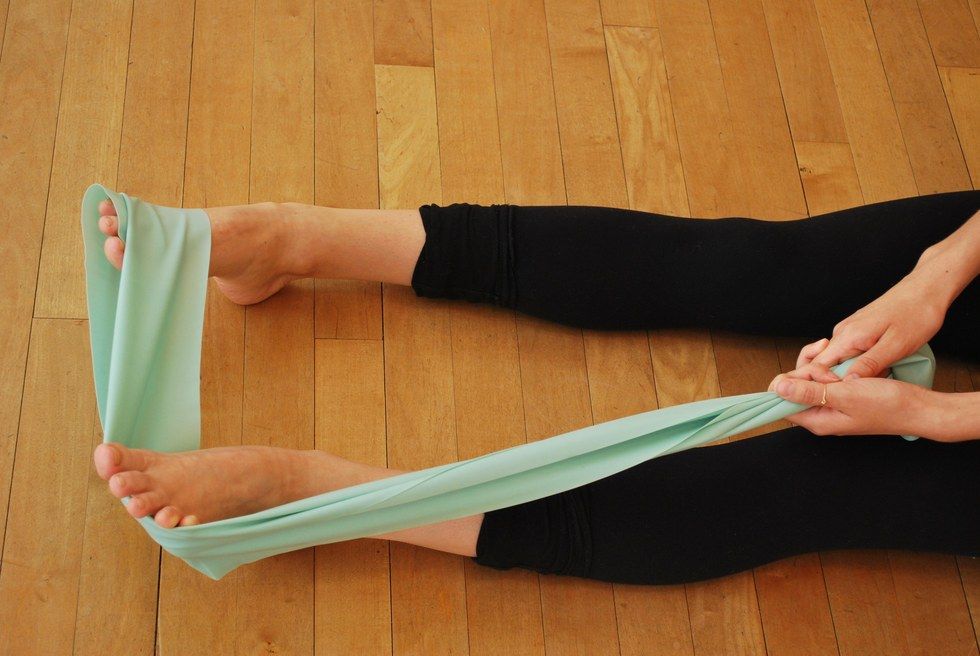 Sliding must be controlled, otherwise you can tear the ligaments.
Sliding must be controlled, otherwise you can tear the ligaments. - 4. Workout for two. To make the classes more interesting, you can attach your friend to this. And a more experienced person will tell you how to keep your posture and perform the correct transverse twine. A friend can press on the shoulders and legs, which helps to deepen the split.
- 5. Don't rush. In everything you need to know the measure, this also applies to stretching the muscles. Too much pressure will lead to injury, after which you will have to abandon any exercise for a long period.
- 6. Environment. You can work on the twine both in a quiet and in a noisy place, it depends on the preferences of the person. The setting should be inspiring. Only in a comfortable environment will a person be able to focus on his body and sensations. For example, some people cannot imagine classes without loud music and TV.
Cross Split Exercises
Every workout should start and end with a stretch, especially splits, where all the load falls on the muscles of the legs.
To avoid problems such as torn ligaments and muscle tears, you must first warm up the body. In this case, do not try to do all the exercises at once.
"Wasp"
SP: legs wider than shoulders, toes to the side, deep squat. The feet are pressed to the floor, the hips are parallel to the floor, the knees turn to the sides. In this position, you need to rest your elbows on your knees, while pushing your pelvis forward. This will help stretch your pelvic muscles. This exercise will help you start training and bring you closer to your cherished dream - to sit on a transverse twine.
Side lunges
PI: one leg is extended to the side, the weight of the body is concentrated on the other (bent leg). The foot is completely placed on the floor, and the thigh is stretched as much as possible. After 30 seconds, the weight of the body is transferred to the second leg. This exercise can be performed a little differently: the foot is not placed completely on the floor, and the leg rests on the inside of the foot, tensing the muscles in the knee joint.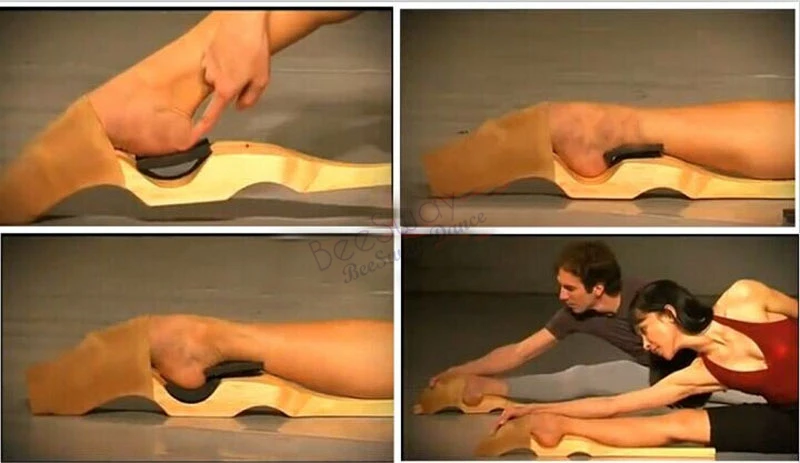
"Frog"
IP: sit on your knees, bars - on the side. The knees are pulled apart and placed on the bars, hands rest on the floor. The angles between the thigh, lower leg and body should be straight. Here you need the help of a friend who sits down from above. Now you need to try to relax all the muscles as much as possible, while the partner will observe the correct position of the pelvis. This exercise is a little painful, because the inguinal part is stretched. You shouldn't hurry. For those who do not know how to sit on the transverse twine, but really want it, the exercise becomes more complicated. You need to remove the bar under the knee and stretch the leg to the side. The foot is also fully pressed to the floor. Stretch should be at least 3 minutes, changing legs. Next, the second bar is carefully removed and the second leg is extended.
"Butterfly"
IP: sit on the floor, legs bent at the knees, feet connected. The heels are pulled to the body as much as possible, the knees are pressed to the floor with the help of the hands. The back does not bend and is kept straight. Hands are placed in front of the feet and forward bends are made. The back is straight and the knees are fully pressed to the floor. This exercise helps to stretch the inner thigh and increase the flexibility of the groin tendons.
The heels are pulled to the body as much as possible, the knees are pressed to the floor with the help of the hands. The back does not bend and is kept straight. Hands are placed in front of the feet and forward bends are made. The back is straight and the knees are fully pressed to the floor. This exercise helps to stretch the inner thigh and increase the flexibility of the groin tendons.
Pancake
IP: sit on the floor, legs straight, spread apart, toes pointing up. Hands are stretched forward, a tilt is made in front of you. You need to try to touch the chest to the floor and stay in this position for a few minutes. With outstretched arms, turns are made to one leg, and then to the second. You need to try to grab your foot with your hands and do 10 tilts in 5 sets. This exercise allows you to effectively stretch the inner and back of the thigh and tendons under the knee and acts as an effective stretch for the transverse split.
Touching the toes
PI: standing, legs straight, feet together.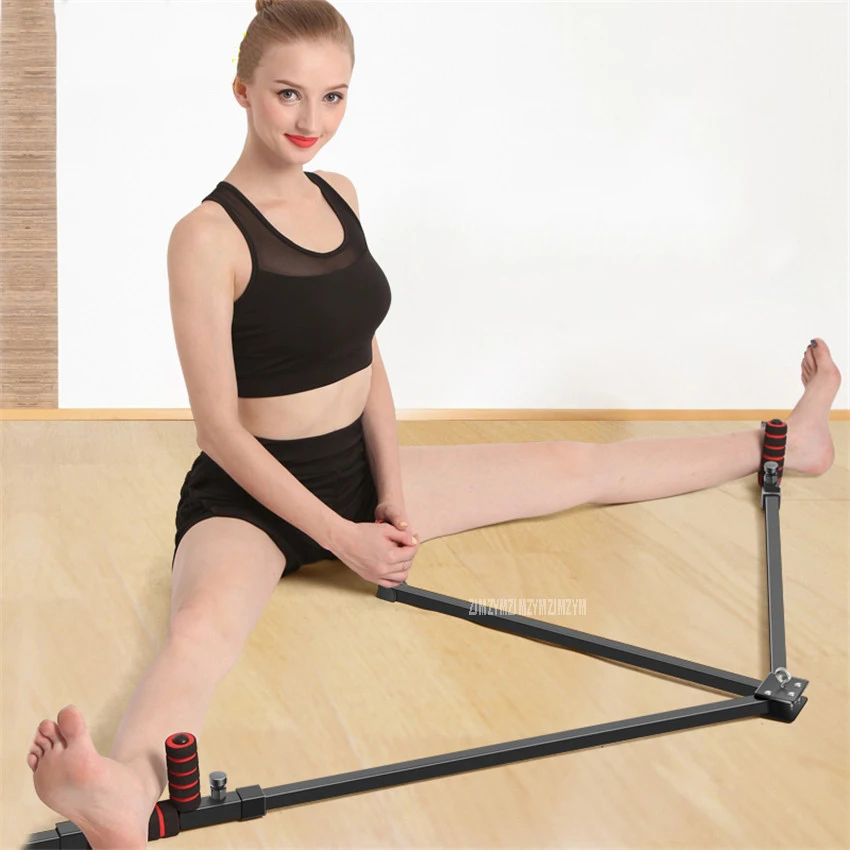 An inclination is made to the floor - one must try to reach out to the toes. The knees should remain straight, and with each tilt, you need to linger in this position for 40 seconds.
An inclination is made to the floor - one must try to reach out to the toes. The knees should remain straight, and with each tilt, you need to linger in this position for 40 seconds.
This exercise can be done with one leg bent, which has a beneficial effect on the muscles and tendons in the knee area.
Touching the floor with elbows
SP: standing, feet - shoulder-width apart. The legs should be straight, and when leaning forward, you should try to reach the floor with your hands. In this position, you should bend as much as possible and put your elbows on the floor. Standing, bends are made to the ankles in turn - you must try to clasp them with your hands. This exercise is one of the most important and is performed before you sit on the twine. You need to do it 10 times in 5 sets.
Warnings for beginners
Never sit on the splits abruptly, this will not lead to good results, but only injure the muscles and ligaments.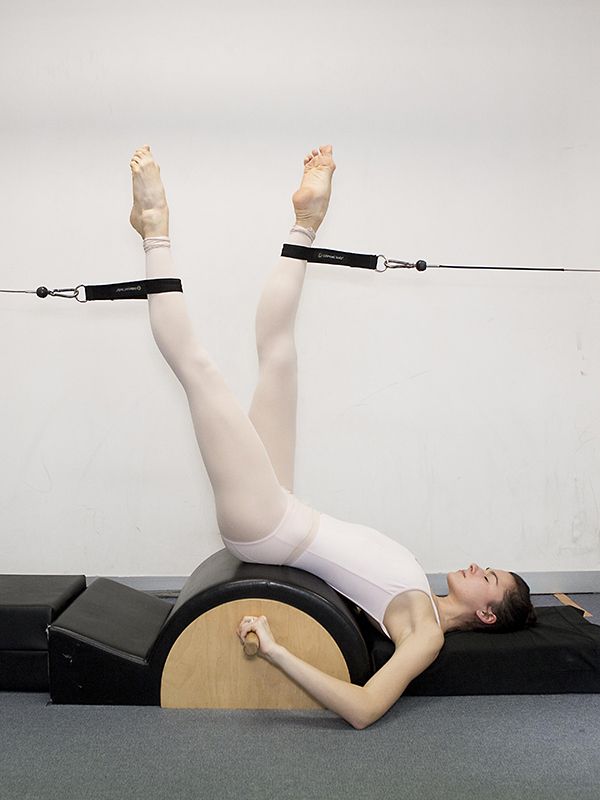
Unfortunately, many people do not have a question about how to sit on the transverse twine, because their body structure is not designed for full stretching. In this case, it is physically impossible to sit on a full transverse split, regardless of the number and duration of training.
Tips for beginners
You must be extremely patient, because you won’t be able to do the splits from the first workout. Sometimes you can achieve the desired result after a few months of intensive training, but not hours. For a change, it is recommended to do the splits against the wall, stretching your legs in front of the wall, as if trying to do a split. It is permissible to perform other exercises only after feeling tension in the muscles of the legs.
Twine for children
Many adults think that babies are flexible from birth and do not need training for twine. This is a deep delusion, because the child needs to be trained, taught to sit on him correctly, and stretching on the transverse twine will help with this.